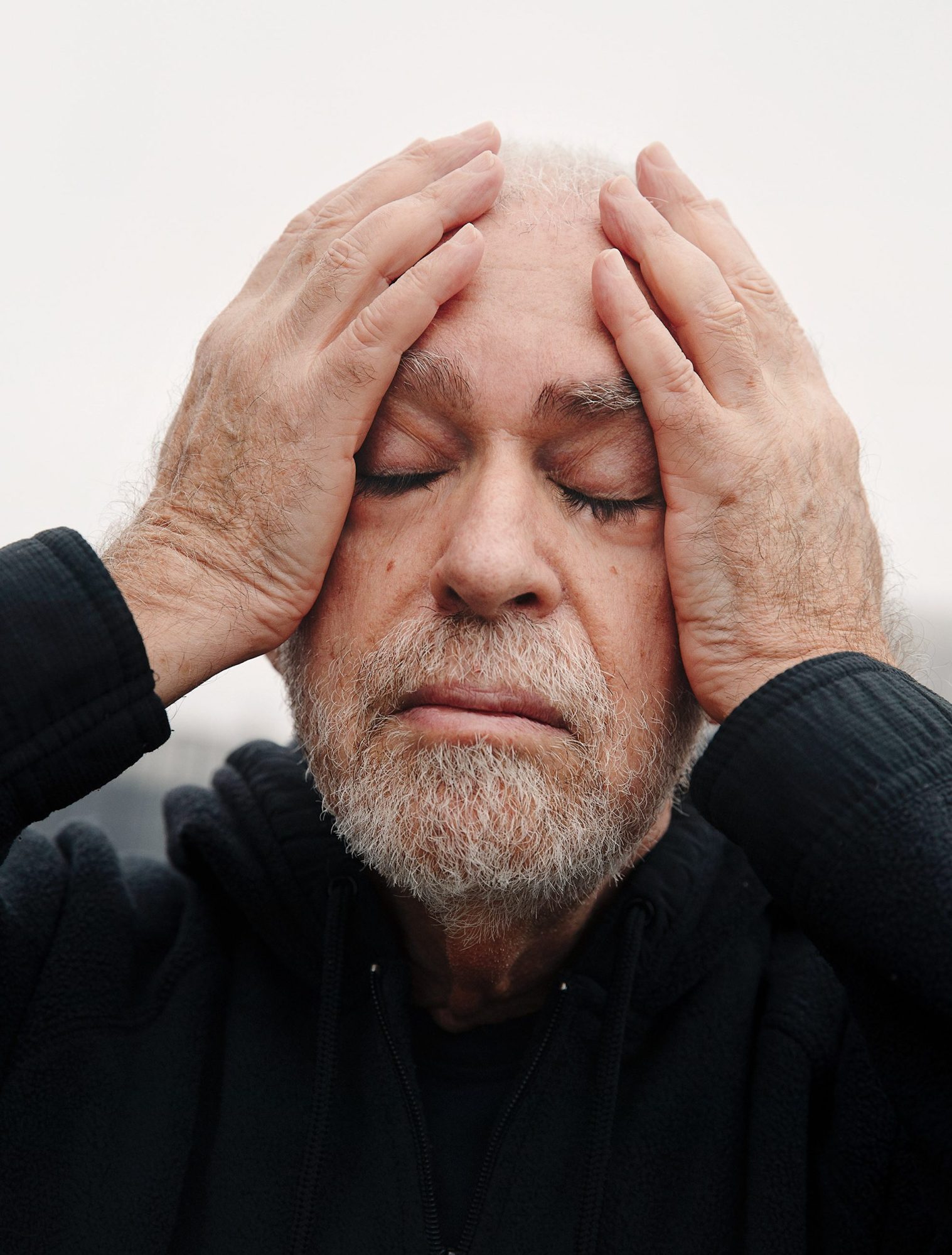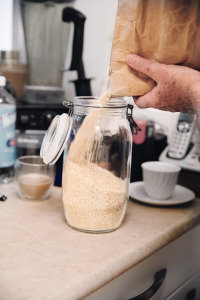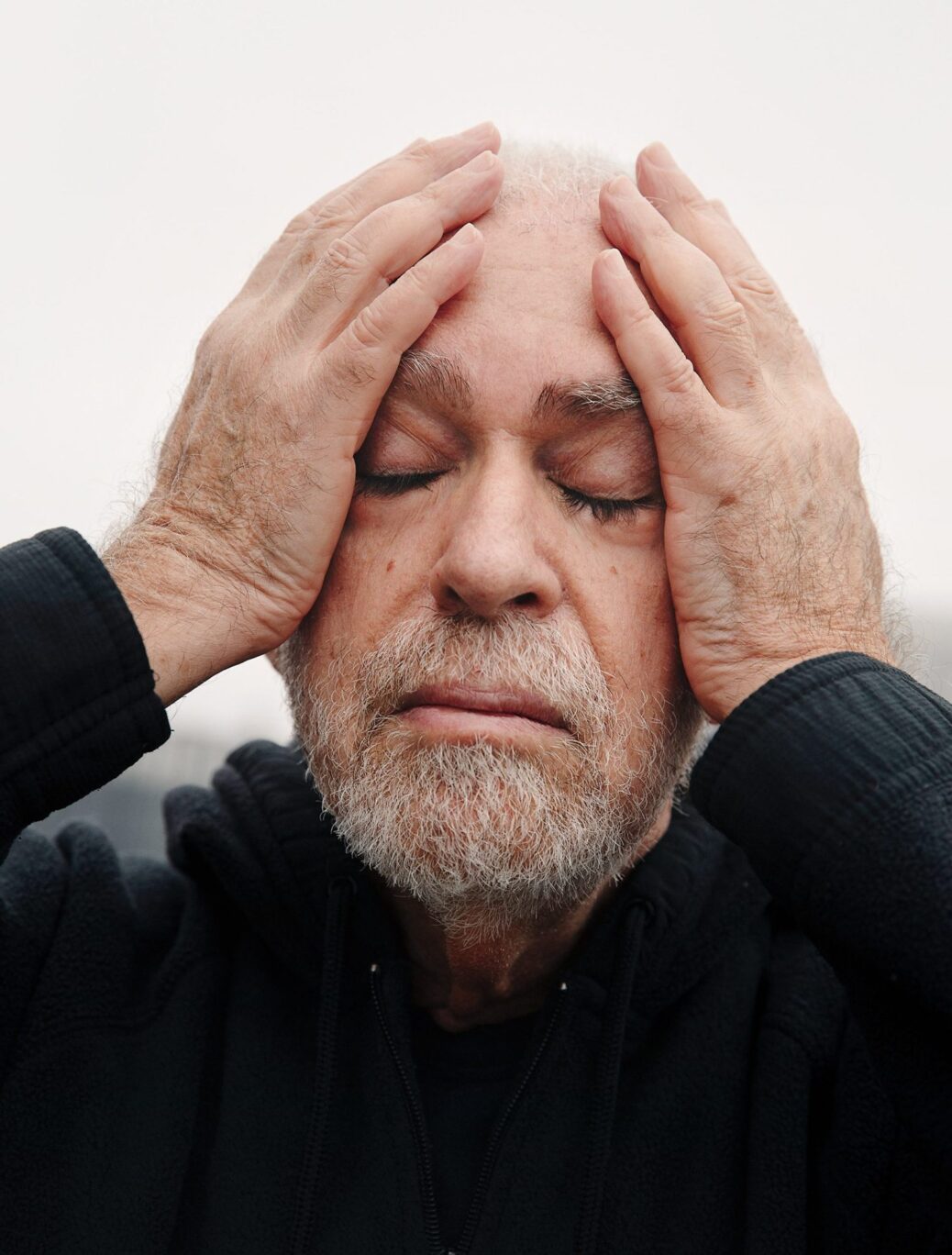In the early 1970s, Steve Gorad ’63 had a successful career as a clinical psychologist. He was in charge of the alcohol unit at Boston State Hospital and had a private practice, but he was restless. “It wasn’t enough,” he says. “I was a long-haired hippie writing [draft exemption] letters for people who didn’t want to go to Vietnam. I had doubts about what we really knew about psychology. I was a seeker.” So when Gorad’s boss at the hospital refused to give him time off to attend a 40-day spiritual workshop organized by a group called Arica, he quit. He immersed himself in Arica, turned his home in Boston’s South End into a commune, and traveled throughout Latin America. “My response to most everything during those years was to say yes,” he recalls.
While living in Chile, Gorad visited Bolivia. There he encountered quinoa, a grain considered peasant food in Latin America and relatively unknown elsewhere at the time. He was struck by its taste, and intrigued when told of its nutritional value. He began to study quinoa on frequent trips to the high-altitude region of Bolivia, called the Altiplano, where it’s widely grown, and by reading scientific papers. He learned that quinoa plants are often resilient even in the face of drought, flooding, and frost. He learned, too, that quinoa’s protein content is unusually high, ranging from 16 to 21% (compared with less than 14% for wheat and roughly 7.5% for rice). He also found that it contains all the “essential” amino acids—those that must come from food because the body can’t make them on its own—in proportions close to the nutritionally ideal ratio. “This makes the quality of quinoa protein roughly equivalent to that of milk (casein) or egg (albumin), without any of the disadvantages of coming from an animal source,” he has written. (Gorad credits MIT for giving him the tools to evaluate the science behind these nutritional claims. “MIT taught me the scientific method,” he says. “I can’t just accept claims because I’m told about them. I need to see proof, and that has served me throughout life—and certainly when it came to quinoa.”)
“I just had a sense that if I left the orderly path, my life wasn’t going to collapse. It would open into something else more exciting. And that is what happened.”
In the late 1970s, Gorad and two partners explored the possibility of importing quinoa into the United States. James Silver, who was the head of purchasing at Erewhon West, a natural foods company in Los Angeles, recalls hearing their pitch and realizing that quinoa’s nutritional properties made it an alluring product. “Quinoa wasn’t available in the US when they began this, at least not in any commercial sense. Certainly in the natural foods industry it did not exist,” Silver says. When Gorad and his partners founded Quinoa Corporation, in 1983, “they were the first, and for a very long time the only, importers of quinoa in the US.”
Gorad and his partners brought passion to their venture. “We were on a mission for quinoa,” he says, adding that in the early days they met with shoppers at natural food markets, handed out fliers, and “served little paper cups of cooked quinoa.” They sold small amounts of the grain with this approach but faced challenges in scaling up and securing a supply to import. Much of the grain available required extensive cleaning because it was “full of stones, dirt, dust, plant particles, pieces of metal, glass, unidentifiable objects, and even rodent feces,” Gorad recalls. (Eventually, Quinoa Corporation developed a relationship with the tea company Celestial Seasonings and used its industrial-scale machinery, including gravity tables, to clean the product.)
One year into the business, tragedy struck. One of Gorad’s partners, David Kusack, took an afternoon off from meeting with potential suppliers to visit an archaeological site in Bolivia; while sitting on a hilltop, he was shot in the back. His death was ruled a probable botched robbery, but theories abounded: it was a case of mistaken identity, business interests were threatened by quinoa farmers banding together, the CIA was behind it, quinoa was cursed. Whatever the cause, Gorad was devastated. “That almost stopped the project,” he says.
Quinoa Corporation persisted but continued to face turmoil. For a time, the company worked with the large natural foods distributors Eden Foods and Arrowhead Mills. But then these companies began to repackage the grain under their own names, ultimately finding their own Latin American suppliers and severing ties with Gorad and his partners. Their business struggled financially, even as the grain became more widely known. “Quinoa Corporation never had the money to do everything we needed to do,” Gorad recalls. “Not once did we place an ad or commercial for quinoa. What we did was make banners and little red buttons that simply said, ‘Quinoa is here.’ That was it.”

CELESTE SLOMAN
In 1986, Australia’s Great Eastern International bought Quinoa Corporation, offering an infusion of capital that allowed the business to expand and distribute the grain in the US. Gorad and his partners purchased equipment to process quinoa, hired more workers, and spent their reserves on a large shipment of the grain. They had overestimated demand, however, and the company once again hit hard times. In early 1988, Gorad resigned “in order to lessen the financial burden on the company,” he says. Even so, he continued to evangelize for quinoa. “I never felt I was taking myself out of the mission, out of the flow of things that needed to happen,” he says.
Over time, he watched quinoa’s popularity increase. Between 2007 and 2013, the amount imported into the US increased tenfold, from 7 million pounds to almost 70 million. Much of it came from Bolivia and Peru, both of which saw a sevenfold increase in quinoa exports between 2005 and 2013. The United Nations declared 2013 the “International Year of Quinoa” to recognize the work of indigenous farmers in the Andes who cultivated the grain. José Graziano de Silva, then director general of the UN’s Food and Agriculture Organization, proclaimed quinoa “an ally in the fight against hunger and food insecurity,” thanks to its nutritional benefits and ability to thrive under sometimes harsh agricultural conditions. It was also hailed as a promising crop in a world facing climate change.
The surge in demand led to drastic changes for indigenous farmers in the Andes. A pound of the grain, which sold for a mere 25 cents in 2000, began to command prices as high as $4. Anthropologist Emma McDonell has noted that this income allowed many farmers, who had lived at subsistence levels, to “send their children to university, invest in new motorcycles and cars, build new houses, and buy farming technology to increase their harvests.” As the boom continued, however, small farmers faced mounting competition from larger operations, including global agribusiness concerns. By 2014, the price of quinoa had dropped to 60 cents a pound.
Newspaper accounts from the time also claimed that many farmers no longer ate the grain their families had grown for generations, opting instead for less-nutritious noodles and rice so they could export their quinoa. But Gorad disputes this. “Not all of the quinoa they produced was exportable,” he says; the farmers he knew had enough for their own families while still bringing in additional income. “These people were dirt poor,” he says. “When the price of quinoa was going up, a lot of wealth came to Bolivia, which desperately needed it.”
Still, he acknowledges that the quinoa boom had its casualties. In some cases, farmers’ family members who had been working in the city came back to the farm to help out, he says. When the price dropped, those who had abandoned other work found themselves in trouble. “In individual cases, there are people who got messed up,” he says. “But the original farmers were still better off in the end than they would have been without the increased sales.”
Gorad himself did not reap outsize profits from quinoa either. After leaving Quinoa Corporation, he consulted on various international projects, including an effort to bring quinoa to Tibet. As distribution widened and new varieties were cultivated, he distributed seeds and information to those interested in growing the grain in the US and abroad. “I think I did more work promoting quinoa after I left Quinoa Corporation,” he says. “I was no longer constrained by the need to work for the benefit of the company. I worked for quinoa!” This work was mostly a labor of love—for seven years, Gorad worked as a legal assistant for a friend in Manhattan in order to pay his bills.
Today, Gorad lives in a Midtown skyscraper in New York, in the shadow of the Chrysler Building. He is retired and spends his days meditating and doing tai chi on the roof—a practice established long before covid-19 hit. (In fact, he sees the pandemic as an opportunity for the personal growth that comes with accepting change. Although ordinary life has been disrupted, “the bottom line is that we are still here, no matter what has been lost or changed,” he says.) He is quick to say that 20% of the apartments in his building are rent stabilized, including his, which he shares with a friend. “Quinoa didn’t make me rich,” he says. “I wasn’t a businessman and I am still not.”

CELESTE SLOMAN
Gorad is well aware of how unusual his life’s course has been, considering where he started. “I’m a Jewish kid from the Bronx. I’m a nerd,” he says. “Everything in my early life was programmed and planned. I just had a sense that if I left the orderly path, my life wasn’t going to collapse. It would open into something else more exciting. And that is what happened.”
“I was using business to accomplish a mission,” he adds. “I learned that from Buckminster Fuller, who lectured at MIT: you should do what you do because it’s good for humanity.”
In Gorad’s apartment, the kitchen and front hall closet are crammed with quinoa from all over the world: jars of pearly grains from Bolivia, packets of small white, red, and black grains, samples of a dark and sticky Canadian strain, almost like sticky rice. “I’ve been making cakes and breads with that,” he says, offering up a slice of a dark brown loaf that is dense and sweet. “I still feel that there’s no other food that’s as good to my body as quinoa.”
Steve Gorad’s Quinoa Corn Chowder
¼ cup quinoa
½ cup potato, cubed
2 Tbs carrot, diced
¼ cup onion, chopped
1 ½ cups corn kernels
2 cups water
2 cups milk
¼ cup parsley, chopped
Salt and black pepper to taste
Butter
Simmer quinoa, potato, carrot, and onion in water until soft (about 20 minutes). Add corn and simmer another 5 minutes. Add milk and bring just back to a boil. Season to taste. Add parsley and a bit of butter just before serving.
Steve Gorad’s Quinoa Corn Bread
2 cups corn meal
1 cup quinoa meal
1 tsp salt
½ tsp baking soda
1 ½ tsp baking powder
1 Tbs honey or brown sugar
1 large egg, beaten
3 Tbs melted butter
2 ½ cups buttermilk
Grind raw quinoa in a blender to make quinoa meal.
Mix wet ingredients together. Mix dry ingredients together. Combine the two. Bake in greased 9” x 9” pan or muffin tin at 425° F for about 25 minutes, or until golden brown.




Recent Comments